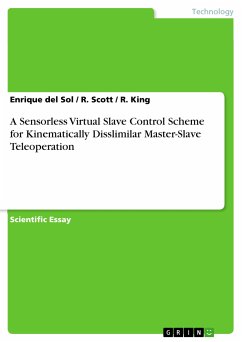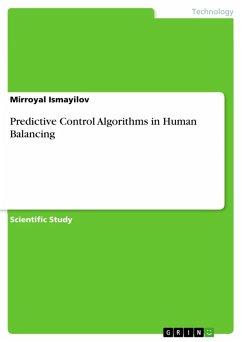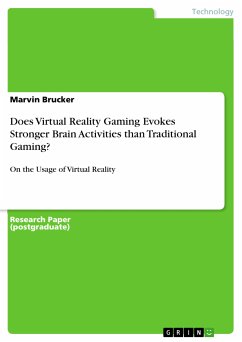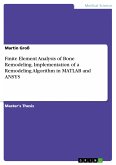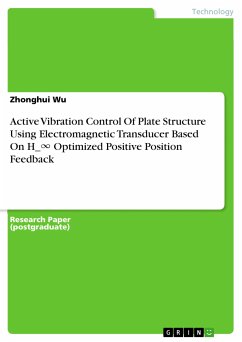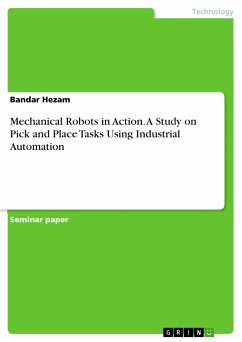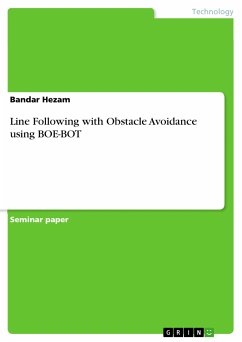Scientific Essay from the year 2012 in the subject Engineering - Robotics, Universidad Politécnica de Madrid, language: English, abstract: This paper is organised as follows: section 2 summarises the remote handling issues in the design of control rooms for teleoperating dissimilar master-slave bilateral systems, section 3 covers the radiation tolerance of robotics systems with special attention to force sensors, in section 4 the sensorless virtual slave architecture is explained and the theory behind the sensorless force feedback is discussed. Section 5 details the experimental equipment used in this research while in section 6 we present the results obtained in 1 degree of freedom. Finally in 7 we present the conclusions and future applications of this technique in multiple degrees of freedom. The use of telerobotic systems is essential for remote handling (RH) operations in radioactive areas of scientific facilities that generate high doses of radiation. Recent developments in remote handling technology has seen a great deal of effort being directed towards the design of modular remote handling control rooms equipped with a standard master arm which will be used to separately control a range of different slave devices. This application thus requires a kinematically dissimilar master-slave control scheme. In order to avoid drag and other effects such as friction or other non-linear and unmodelled slave arm effects of the common position-position architecture in nonbackdrivable slaves, this research has implemented a force position control scheme. End-effector force is derived from motor torque values which, to avoid the use of radiation intolerant and costly sensing devices, are inferred from motor current measurement. This has been demonstrated on a 1-DOF test-rig with a permanent magnet synchronous motor teleoperated by a Sensable Phantom Omni® haptic master. This has been shown to allow accurate control while realistically conveying dynamic force information back to the operator.
Dieser Download kann aus rechtlichen Gründen nur mit Rechnungsadresse in A, B, BG, CY, CZ, D, DK, EW, E, FIN, F, GR, HR, H, IRL, I, LT, L, LR, M, NL, PL, P, R, S, SLO, SK ausgeliefert werden.

